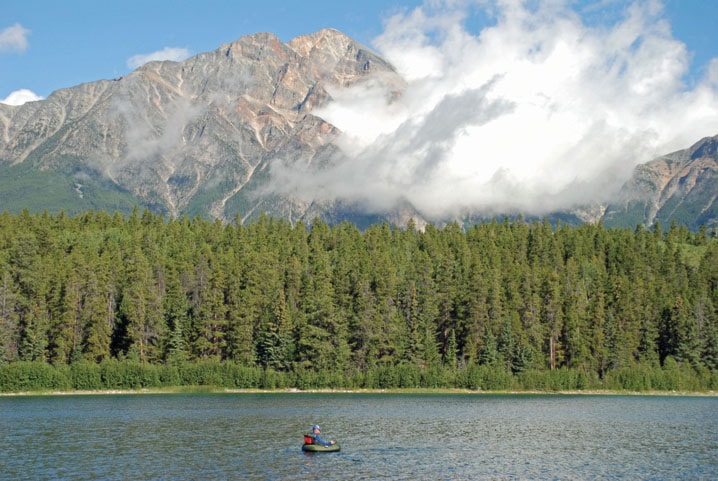As I sat on the patio of our comfortable accommodation and gazed out at the tranquil waters of Patricia Lake in Jasper National Park, I found it hard to believe that this peaceful spot in the Canadian Rockies could be hiding anything.
But there is a secret buried below the surface of Patricia Lake and it’s classified as “Top Secret” if you want to be technical about it — or at least it used to be.
Deep below the surface of the lake are the remains of an unfinished top secret British Second World War aircraft carrier code named Project Habbakuk.
English journalist, spy and inventor Geoffrey Pyke conceived of the idea to build an aircraft carrier out of ice. Since ice is unsinkable, he reasoned that the vessel would be virtually impervious to bomb and torpedo attacks and could be easily repaired by pouring water into any holes or cracks and freezing it.
With the approval of Prime Minister Winston Churchill and some support from the United States, naval architects and engineers began to build a large scale model of Habbakuk on remote Patricia Lake in 1942. The vessel was built from a substance called Pykecrete, which is made from a mixture of frozen paper pulp and sea water and was said to be almost as strong as concrete.
Since ice is pretty inexpensive to make, especially during the winter in Jasper, the entire budget for the project was limited £5,000.
Unfortunately, the budget had not accounted for the large quantities of steel that were required for the skeleton of the ship. With spiraling steel costs and other technical issues, the British eventually realized that the budget was unrealistic and the ship would not be ready in time. In 1943, they decided to scuttle the project and left the ship to sink in place.
In the 1970s, remains of the ship were discovered in Patricia Lake and in 1989, a plaque commemorating the Habbakuk was placed on the shore of the lake.
You don’t picture the cold lakes of the Canadian Rockies as great diving sites, but today, the Habbakuk is one of the more interesting and popular dive sites in Alberta.
The closest I have come to seeing the skeletal remains of the unusual ship is to stand on the shoreline near the small plaque that commemorates its existence. It’s kind of cool just knowing it’s there.
